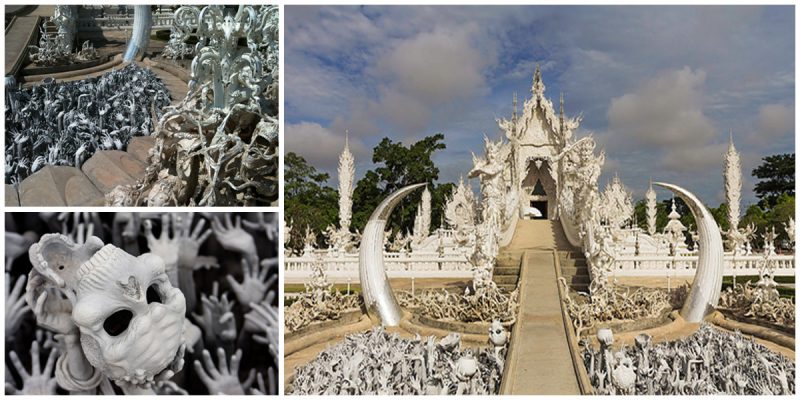Wat Rong Khun, perhaps better known to foreigners as the White Temple, is an unconventional, contemporary Buddhist temple in Chiang Rai. This bizarre-looking white temple is owned by Chiang Rai-born visual artist Chalermchai Kositpipat, who designed it. The temple opened to visitors in 1997.
It is one of the most recognizable temples in Thailand and one of Chiang Rai’s most visited attractions. The artist intends for the area adjacent to the temple to be a center of learning and meditation and for people to gain benefit from the Buddhist teachings.
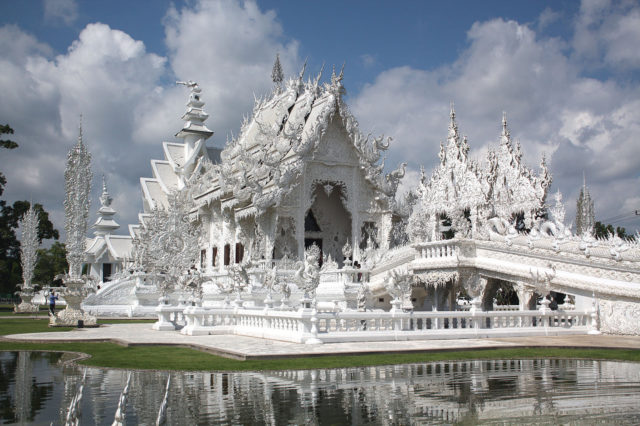
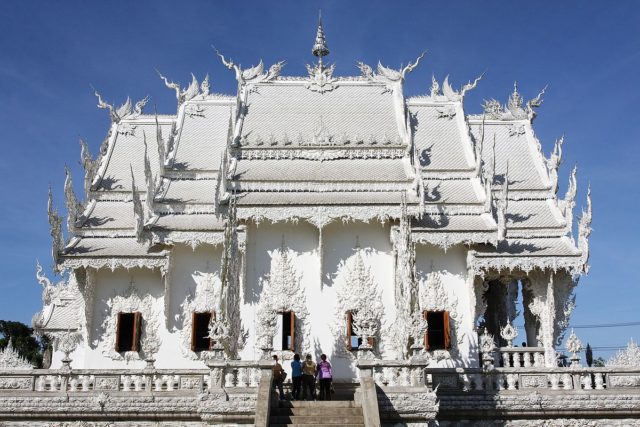
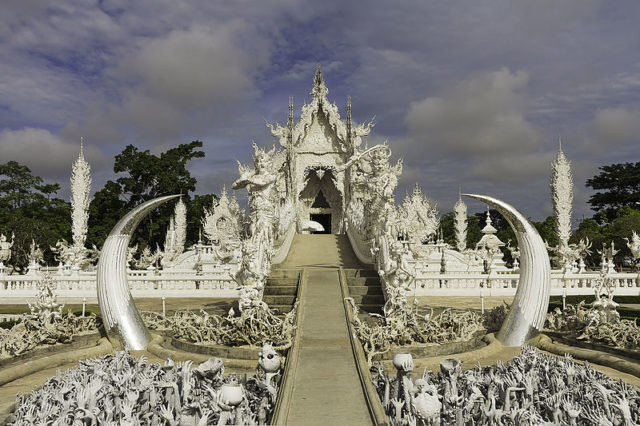
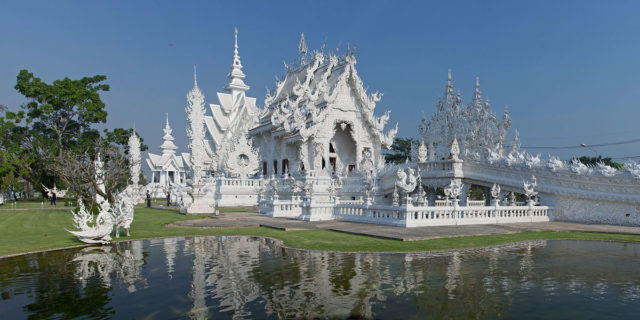
The principal building or Ubosot is an all-white building with fragments of mirrored glass embedded in its exterior. The white color signifies the purity of the Buddha, while the sparkling glass symbolizes the Buddha’s wisdom and the Dhamma, the Buddhist teachings. All around the complex are intricate sculptures of demons, skulls, severed heads hanging from trees and other bizarre objects.
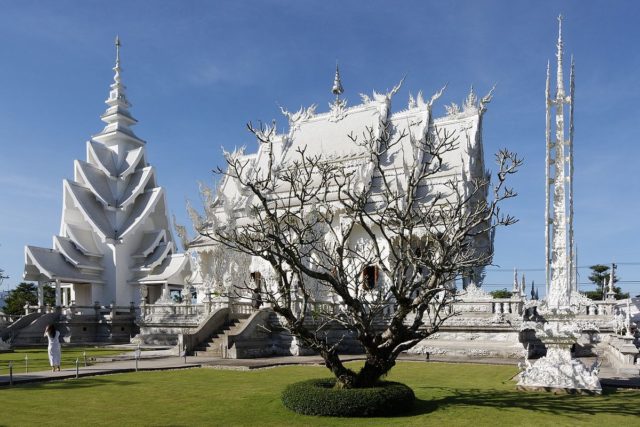
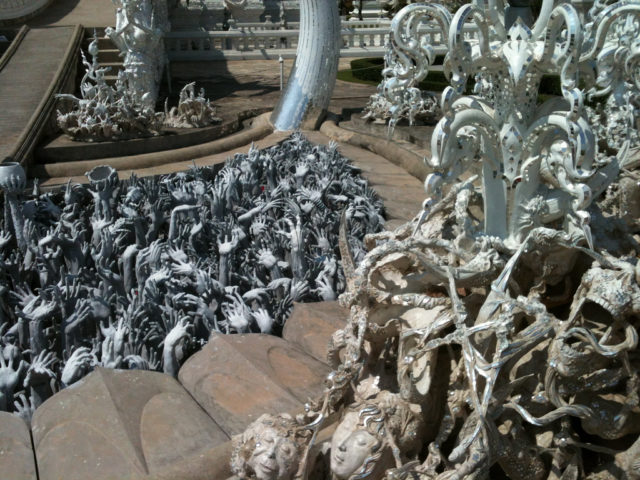
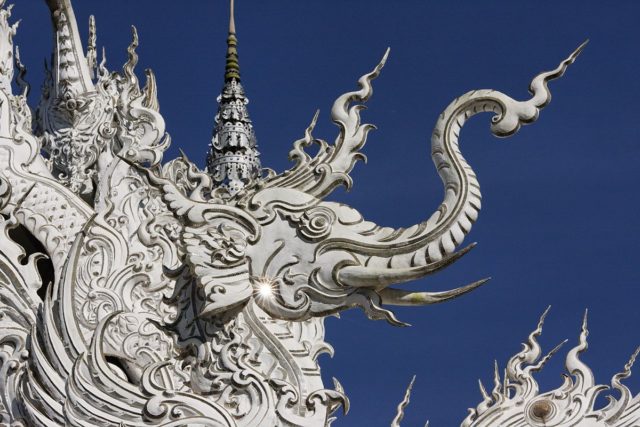
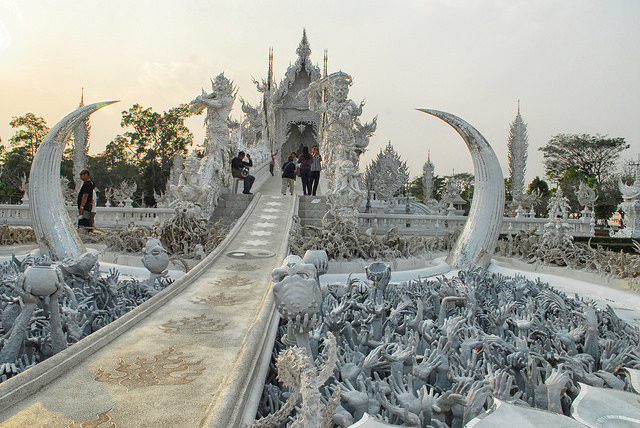
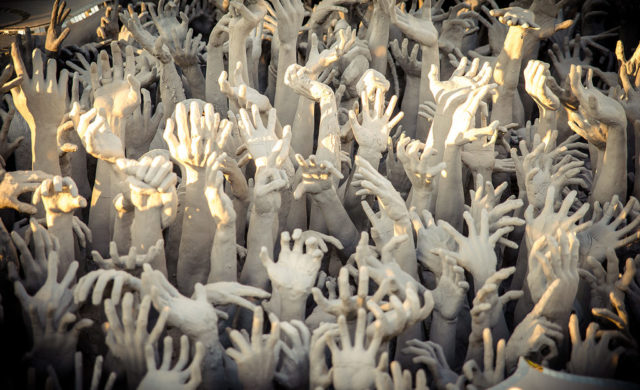
Thus, the temple and its grounds are surprisingly contemporary, focusing on fictional elements of our materialistic world. Instead of paintings of heroes fighting demons, the artist decided to take contemporary manifestations of good and evil and put it into a Buddhist context: the predator struggling to free itself from the ground, aliens, and elaborate murals depicting Neo from The Matrix, Terminator, Superman, and an angry bird smashing into the World Trade Center Towers.
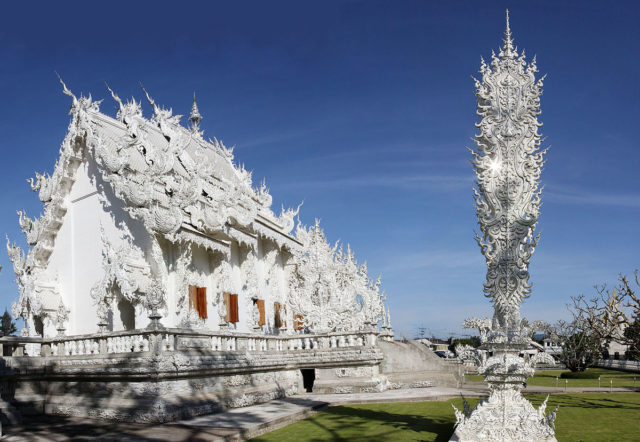
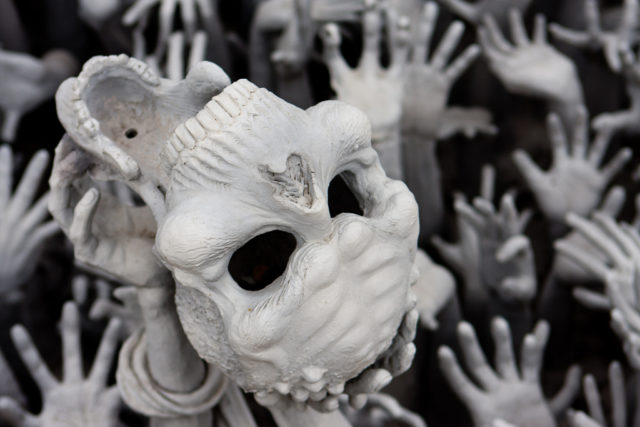
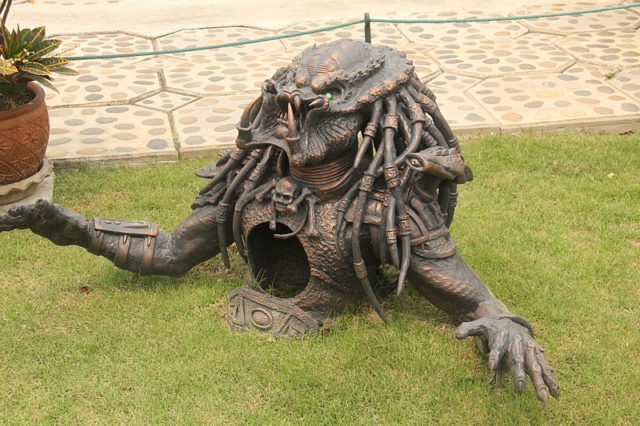
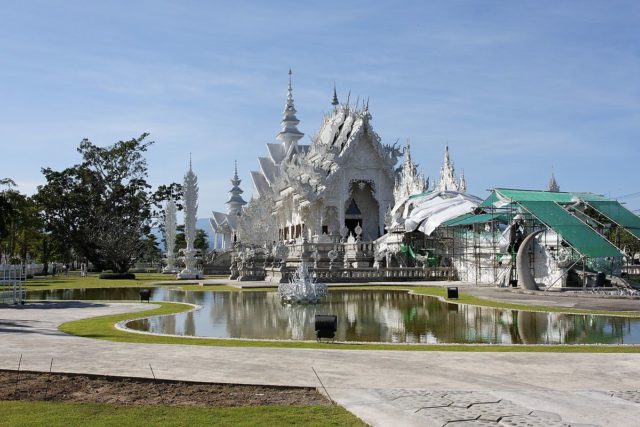
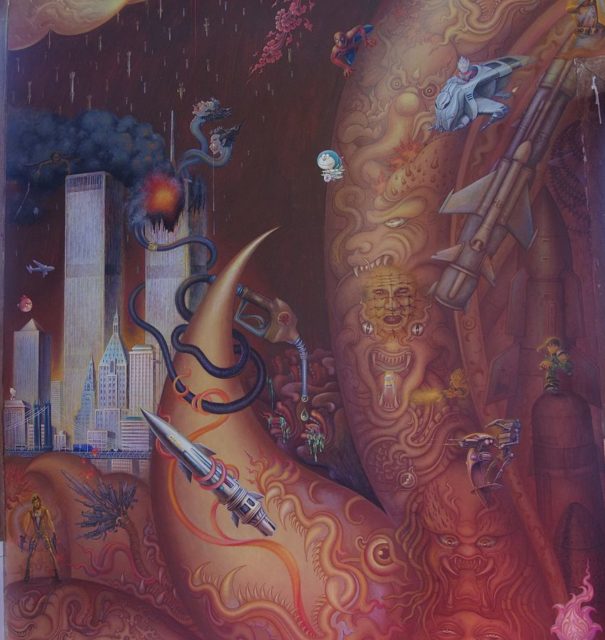
In another wall, there are paintings of spaceships and a scene depicting a cataclysmic event annihilating planet Earth. To date, the temple is not finished. When completed, the white temple compound will have nine buildings, including the existing ubosot, a hall of relics, a meditation hall, an art gallery, and living quarters for monks. The works are ongoing but are not expected to be completed until 2070.
